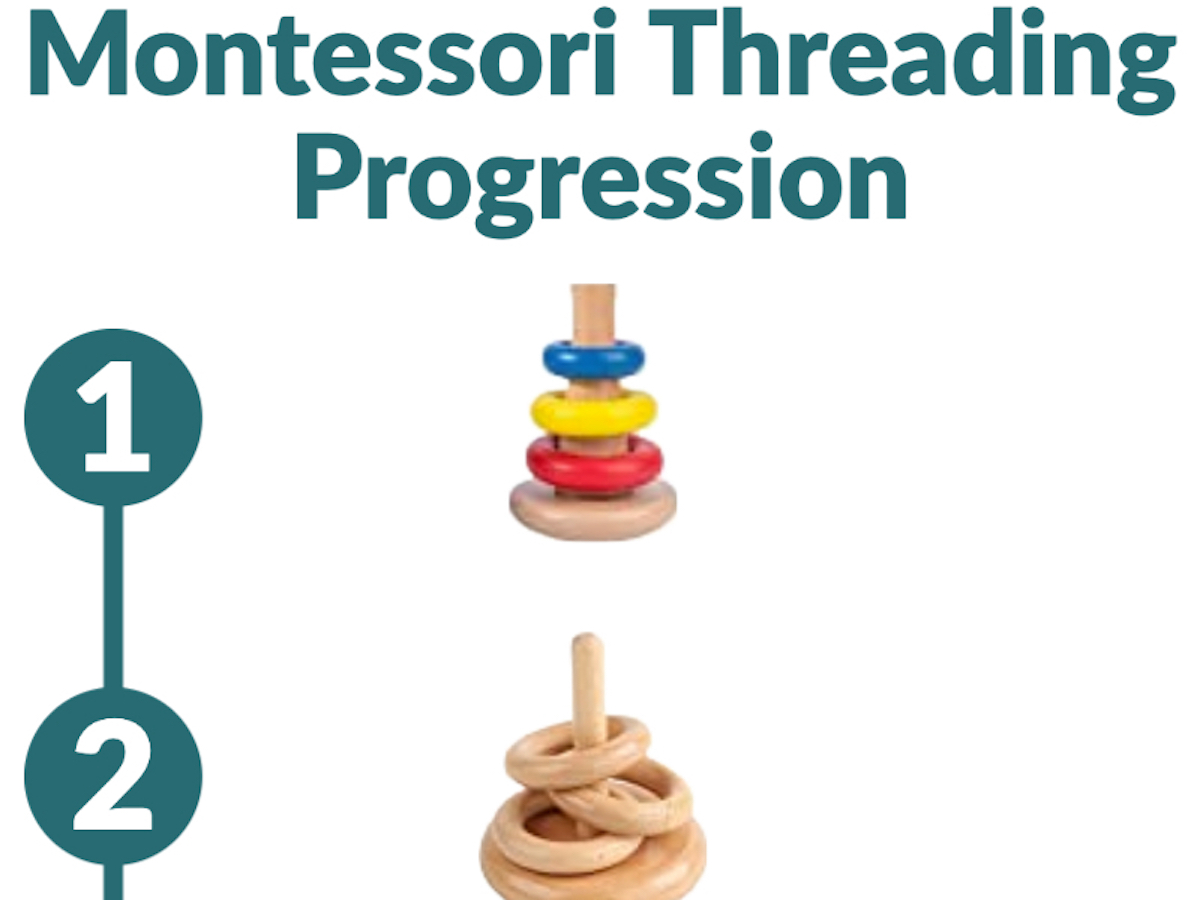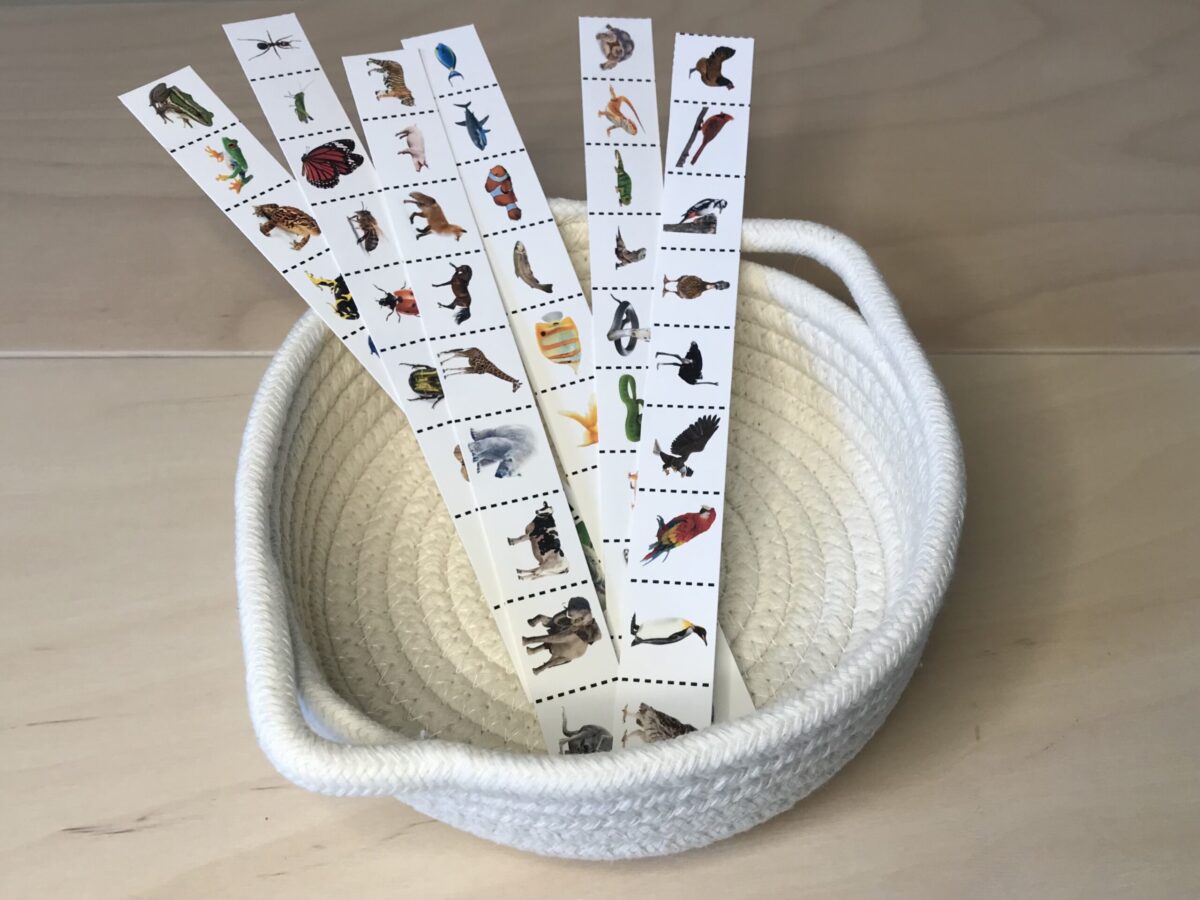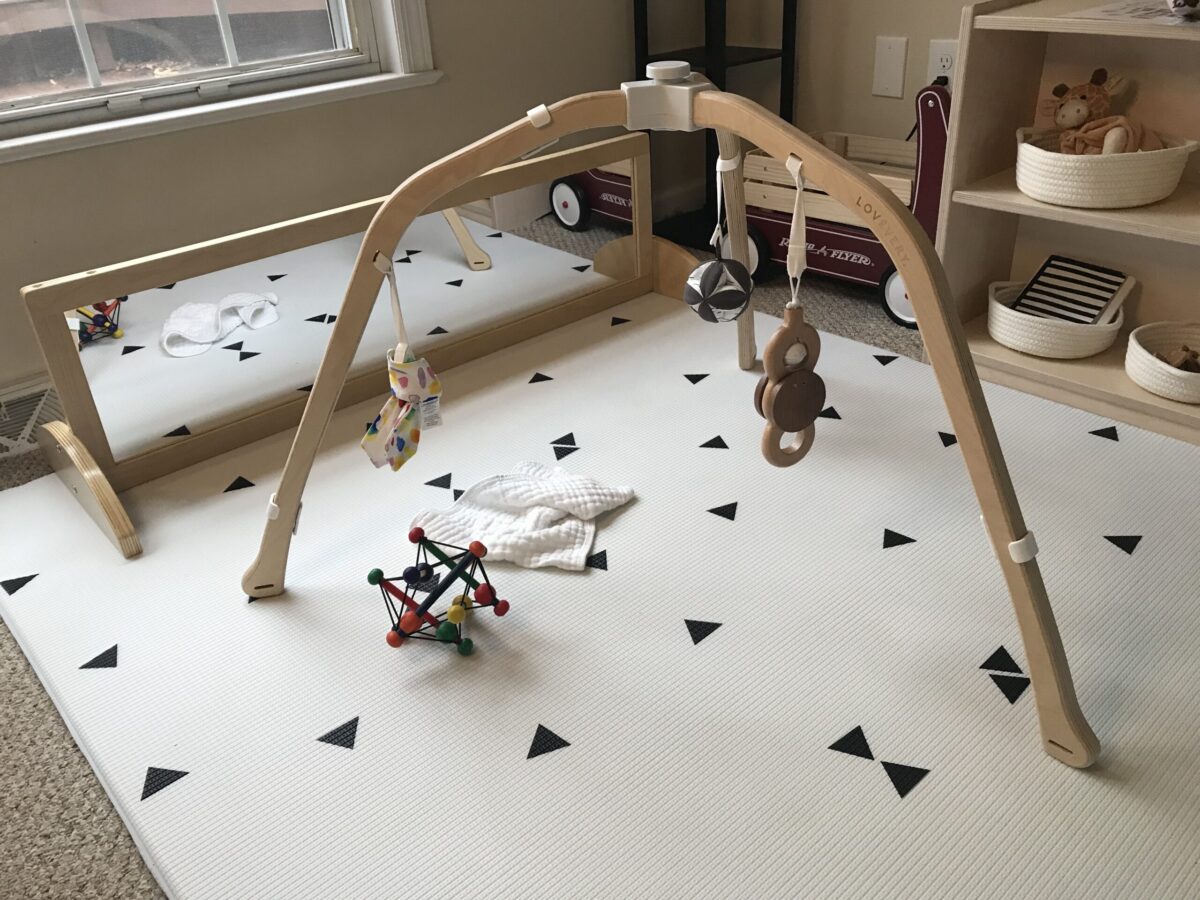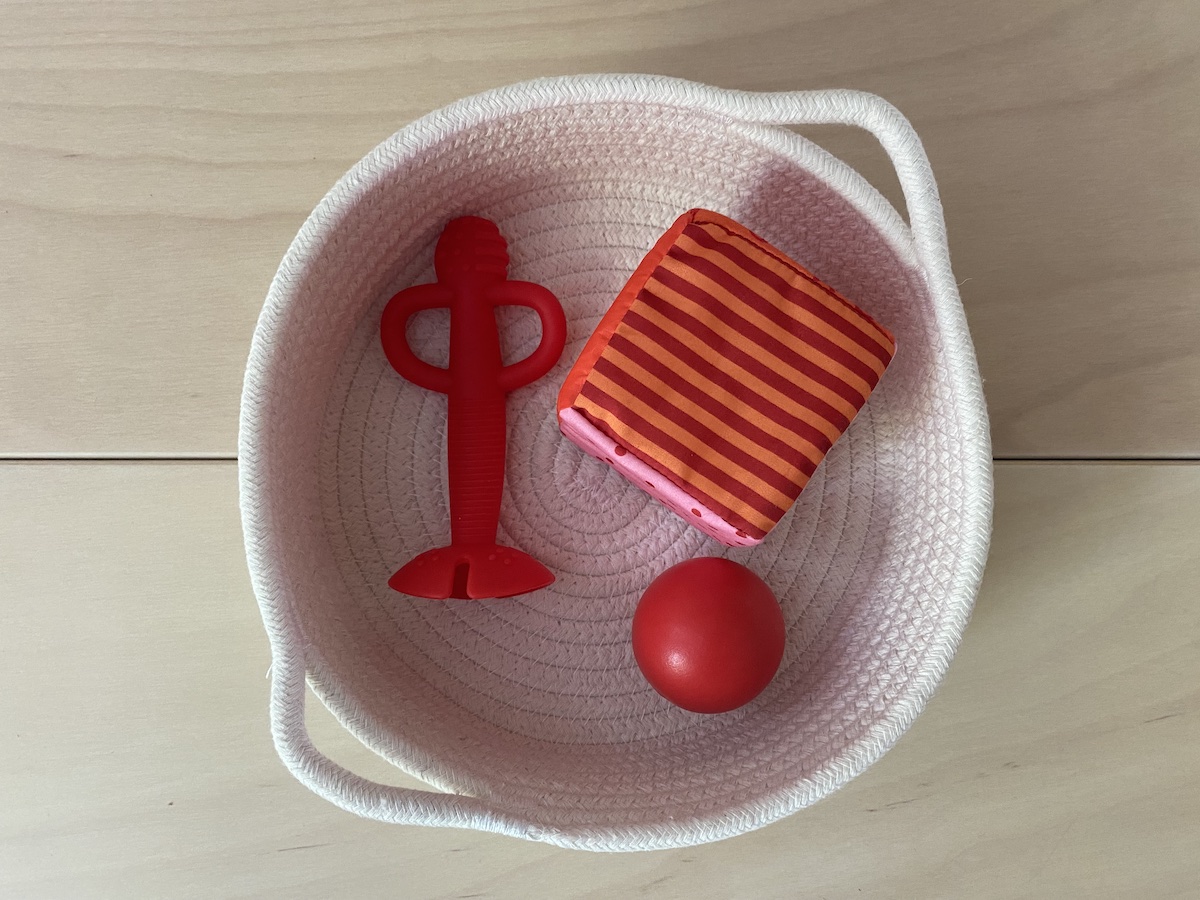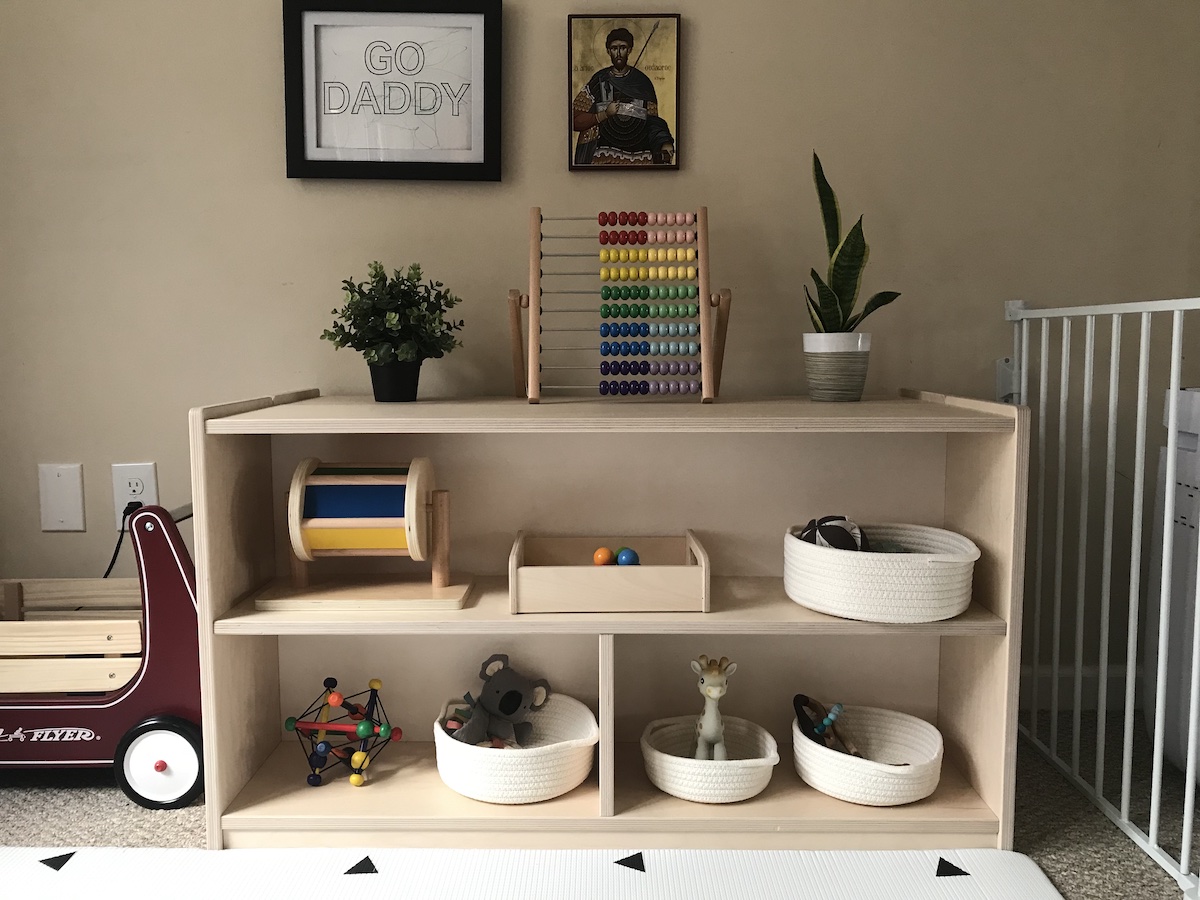This post may contain affiliate links. This simply means that I will earn a small commission, at no cost to you, if you purchase through a link. I would and have recommended all of the products I list even without a link.
The final level uses a curvy, or serpentine, dowel. The curvy dowel combines moving in multiple axes at once to accomplish a goal.
Primary Goals
- Strengthen arm and wrist muscles.
- Refine pincer grasp.
- Develop fine motor skills.
- Develop hand-eye coordination.
Secondary Goals
- Increase focus and concentration.
- Develop hand dominance.
Approximate age
17 months, or as soon as the child is comfortable with the straight horizontal dowel in Level 6.
Materials
Discs on horizontal dowel variation: serpentine
Presentation
- Place the discs in a basket next to the base in a tray.
- Help your child bring the tray to the work area. (Carrying objects while walking appears around 18 months, so modify the amount of help on what they are able to do.)
- Place the base with the dowel pointing to the right.
- With your right hand and the pincer grasp, take a disc out of the basket.
- Slowly and carefully put it on the dowel.
- Repeat with the remaining discs.
- One at a time, remove the discs from the dowel.
- Offer the child a turn and move aside.
- When the child is done, have them help put the discs back in the basket and put them on the tray.
- Help the child return the tray to the shelf.
Easier variations
None. Use the previous level with the straight horizontal dowel.
Extensions
Once putting the discs on with the dowel pointing right is mastered, rotate it to point left and have the child use the other hand to put it on.
